|
Today we are going to have a look at two more modern examples of lettering in goldwork embroidery. One can be found on the burial shroud of a princess from Romania and the other is part of a dedication on an orthodox podea or icon cover. They were both part of a temporary exhibition on Romanian embroidery in the Louvre Museum last summer. You can read all about that trip here. In recreating these samples, I had to use common padded goldwork embroidery techniques I am no longer very familiar with. And I made a rookie mistake. Read on so you'll learn from that mistake. I for my part have made a big yellow mental post-it :). First up is the burial shroud of Maria of Mangup, second wife of Prince Stephen the Great of Moldavia. The shroud measures 191 x 103 cm and shows Maria laying in her tomb. She is richly dressed in Ottoman clothing and adorned with precious jewellery. The embroidery is executed with silver and gilt threads as well as coloured silks on red silk fabric. Maria likely died on the 19th of December AD 1477 and is buried at Putna monastery in Romania. The church Slavonic text surrounding the depiction of Maria is written in Cyrillic lettering. The four corners show monograms and double-headed eagles in order to point to Maria's family links with the Byzantine empire. For the epigraphy conference 'Über Stoff und Stein' in Munich next week, I decided to recreate Maria's first name. The embroidery technique used for the lettering seems to be gimped couching over string padding. This means that passing thread is laid over the padding and secured on both sides of the padding with a small couching stitch. The passing thread is folded forwards and backwards over the string padding until all of the padding is covered. Think of it as a satin stitch over padding, but without going through the fabric with the passing thread. Although I know I should have used linen string padding to be historically correct, but I was unable to find some. If anyone knows of a good source, I am all ears! First, I tried soft string padding as it is easier to manipulate. However, when applying the passing thread they would shift and sit on top of each other as the padding was just not firm enough (see on the letter M in the picture above). Then I used white string and that was much better. I also noticed that the widened ends of the letters had less height than the 'body' of the letters. This made me think that the embroiderers must have untwisted the padding thread they were using in order to create this effect. The hardest thing with this lettering sample is the joints and the widening at the ends. For what I can see in the original, the embroiderers fudged until it looked pleasing enough. I have used Stech vergoldet 80/90 CS which is comparable to passing thread #4 and DeVere yarns silk Hessian #18267 for my couching thread. Not bad for a first attempt, but certainly not as smooth as the original :). This has likely to do with the modern passing thread having slightly different properties than the original thread used. And I do apologize for the cat hairs visible in the picture; Sammie cat is poorly and clings to me a lot! The youngest sample I included is this magnificent podea or icon cover made in AD 1681. The amount of Greek lettering in cutwork embroidery is unbelievable. The podea measures 120 x 99 cm and shows in the centre the monastery church it has been intended for and the donors: Serban Cantacuzino and his family. Although this particular embroidery piece sits just outside the time frame of the conference (Middle Ages until AD 1650), I included it as it makes use of different materials and a different technique: cutwork over string padding using gilt bright check. For my recreation, I choose the top Greek word to the left of the Madonna with Child medallion. Unfortunately, I can't make out what it says. The first letter seems to be an Iota, then maybe a Pi, then a Lambda it seems, another Pi maybe, then maybe a Tau and then a Ny. This part of the dedication does not seem to be covered in the exhibition catalogue. The lettering on the podea is simple cutwork over string padding. How hard can that be? Very hard when you are me. I absolutely detest cutwork. Not being able to see the world in 3-D, means that cutting purl to the required length is nearly impossible. Why did I still do it? Every so often one of my dear students WANTS to do cutwork. In order to be at least able to explain the technique well, I do need to practice every once in a while. So off I went with putting in the soft string padding. That was a little fiddly with all the tiny bits on some of the letters. But once all the padding was applied, the word still looked rather good. That was not to last. Although I had remembered to place my padding within the design lines of the lettering, it was by no means enough to prevent the above catastrophe happening. The padding on the original piece is quite high, but clearly much narrower than mine. Once I applied the bright check #8, it all went pear-shaped. Not helped by the fact that the size of the original bright check is smaller than a #8 (sizes #9 and #10 do exist, but are not commonly used and I don't have them in my stash). Why didn't I re-do the sample? Why should I? Due to my eye-condition, I can't do a good job. In addition, the conference delegates do get a good impression of how the cutwork technique works. And that's the main thing. I also felt even more admiration for the embroider of the original podea: Master Gherasim de Galata (his name suggests he was from modern-day Istanbul). He must have had a lot of practice to make the tremendous amount of lettering look so regular. Master Gherasim would never have employed me in his workshop :).
Literature Durand, J. & E. Cernea, 2019. Broderies de tradition Byzantine en Roumanie du XVe au XVIIe Siecle. Musee du Louvre. ISBN 978-2-902302-02-4. Grimm, J.M., 2021. A hands-on approach - Epigraphy in medieval textile art, in: Kohwagner-Nikolai, T., Päffgen, B., Steininger, C. (Eds.), Über Stoff und Stein. Knotenpunkte von Textilkunst und Epigraphik. Harrassowitz, Wiesbaden, pp. 141–147. P.S. Did you like this blog article? Did you learn something new? When yes, then please consider making a small donation. Visiting museums and doing research inevitably costs money. Supporting me and my research is much appreciated ❤!
10 Comments
Weeks ago I saw mention of an embroidery exhibition in Paris on Social Media. After finding out that there is a direct train between Munich and Paris, I decided to go. As the exhibition was soon to end, I did not have the luxury of being choosy when to go or for how long. I and my husband ended up going for 48 hours to a very, very hot Paris. Although I have experienced 40+ degrees before when staying in the deserts of Egypt and Lybia, I hope to never experience Paris in 43,2 degrees ever again! Luckily, the Louvre has cool air vents in most of its stone-paved floors. Guess who walked barefoot during her nine-hour visit? So, what was it all about? The Louvre housed a small, but spectacular goldwork embroidery exhibition in room 505. The pieces dated from the 15th to the 17th century and were made in modern-day Romania. And it turned out to contain some of the largest and most opulent goldwork embroideries I have ever seen! But let's start with the bulk of the embroideries. Romanian or better Wallachian and Moldavian embroidery of the late Middle Ages and early Modern Times is closely related with the Orthodox Church. On display were Orthodox vestments such as: epitrachelion (stole), epimanikia (cufs), epigonation (badge) and epithaphios (an embroidered icon bearing the dead body of Christ). When the Byzantine Empire ceased to exist in AD 1453, the Orthodox Church becomes the keeper of the Greek liturgical culture. The voivodes (princes) of Wallachia and Moldavia see themselves as the heirs and protectors of this heritage. They make donations to monasteries in their own realms, but also to those on Mount Athos in Greece. And some pieces even end up in Jerusalem. Embroidery of this kind was supervised and practised by noblewomen at the court in Byzantium and later at the courts of the voivodes. Both within the noble household as well as in specialised workshops. There is some historical evidence that talented professional embroidery workers were bought free from the Ottomans and they then relocated to Wallachia or Moldavia. However, some of the embroidery workers were serfs. Equally, noblewomen from the Balkans married into the royal families of Wallachia and Moldova. Taking with them and preserving Byzantine embroidery techniques and styles. Due to the conservative nature of Orthodox iconography, it is often impossible to tell where pieces were made or by whom. However, most pieces bear the initials or full names of the donors (abbots, princes, princesses and other nobility). Certain patterns were often even faithfully copied over centuries. Apart from the vestments, there were burial shrouds on display. These huge goldwork embroideries display the edifice of the deceased ruler, his wife or their offspring. The oldest one on display was made for Maria of Mangup before AD 1477 and measures a staggering 191 x 103 cm! Nearly 150 years later, these funerary portraits become even bigger and far more opulent. The goldwork embroidery on them is amazing. Although the exhibition was centred around the banner of Stephen the Great (died AD 1504), I found the piece rather underwhelming compared to the other pieces on display. It measures 124 x 94 cm and shows St. George sitting comfy on a throne resting his feet on a dragon. The figure of St. George is entirely formed of couched silver and gilt threads. Due to the use of conservation net on the whole piece (and indeed many other pieces on display) it was rather difficult to see the actual stitching. This was further complicated by the very low levels of lighting and the dirty glass on the display cases. For those of you interested in this type of embroidery, the Louvre sells an excellent catalogue. Each piece is beautifully photographed and there are even some detail pictures. The book further contains chapters on the political situation of the area during the late Middle Ages, on the historical context of the embroideries, on the banner of Stephen, on the vestments and on the funerary shrouds. As I can only read French with great difficulty, I translated the chapter on the historical context into English. And I am also working on the other chapters and the catalogue part. However, what the book lacks is a chapter on the 'how'. What embroidery techniques were used? What materials were used? It, unfortunately, does not go beyond metal threads and polychrome silk on a velvet background. Do 'how to' books on this type of goldwork embroidery exist? I would love to hear if you know of one! At least a little bit of the 'how' was captured in some of the pictures I took. Here you see a glimpse of the padding underneath the gold threads forming the halo. It really is quite different from the way we do things in western-style goldwork embroidery. I would love to learn more ...
|
Want to keep up with my embroidery adventures? Sign up for my weekly Newsletter to get notified of new blogs, courses and workshops!
Liked my blog? Please consider making a donation or becoming a Patron so that I can keep up the good work and my blog ad-free!
Categories
All
Archives
July 2024
|
Contact: info(at)jessicagrimm.com
Copyright Dr Jessica M. Grimm - Mandlweg 3, 82488 Ettal, Deutschland - +49(0)8822 2782219 (Monday, Tuesday, Friday & Saturday 9.00-17.00 CET)
Impressum - Legal Notice - Datenschutzerklärung - Privacy Policy - Webshop ABG - Widerrufsrecht - Disclaimer
Copyright Dr Jessica M. Grimm - Mandlweg 3, 82488 Ettal, Deutschland - +49(0)8822 2782219 (Monday, Tuesday, Friday & Saturday 9.00-17.00 CET)
Impressum - Legal Notice - Datenschutzerklärung - Privacy Policy - Webshop ABG - Widerrufsrecht - Disclaimer

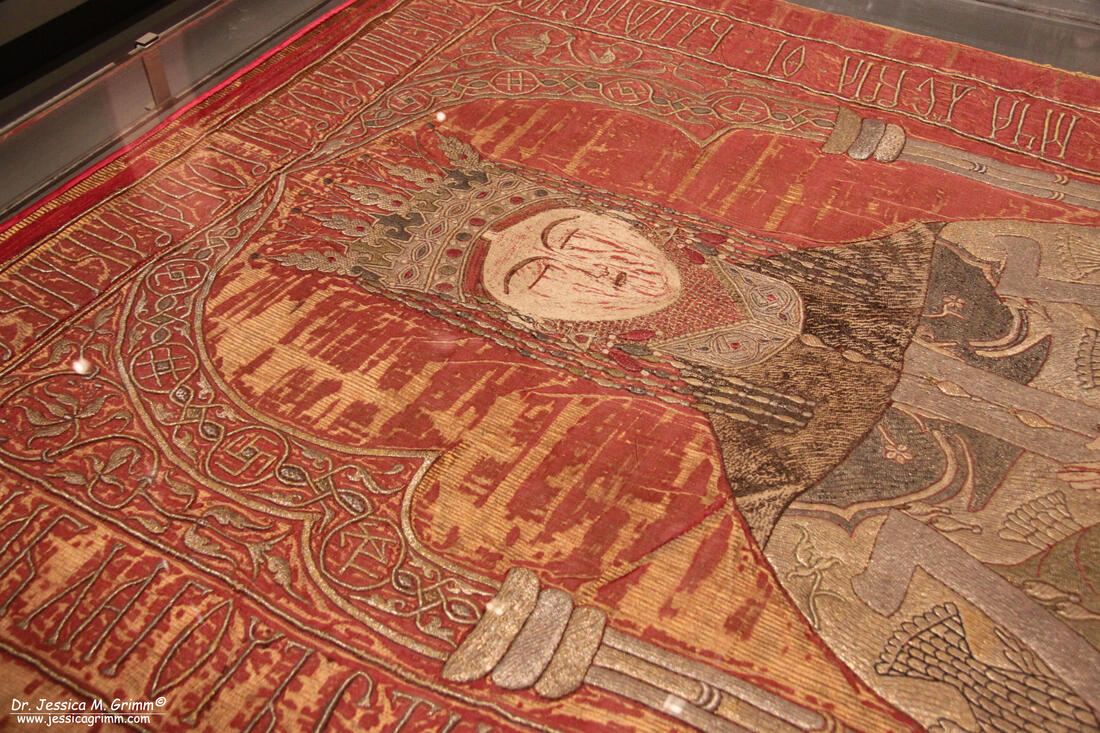
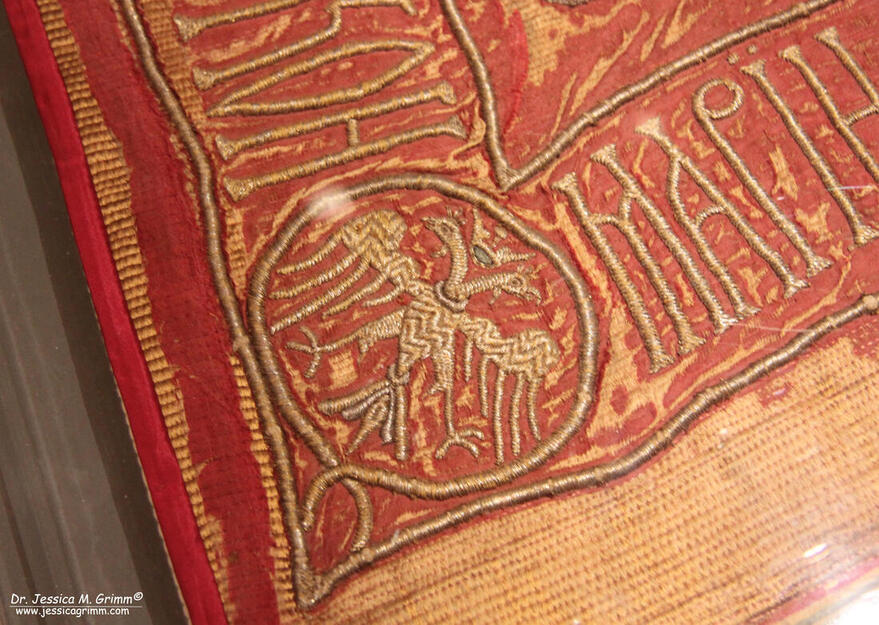
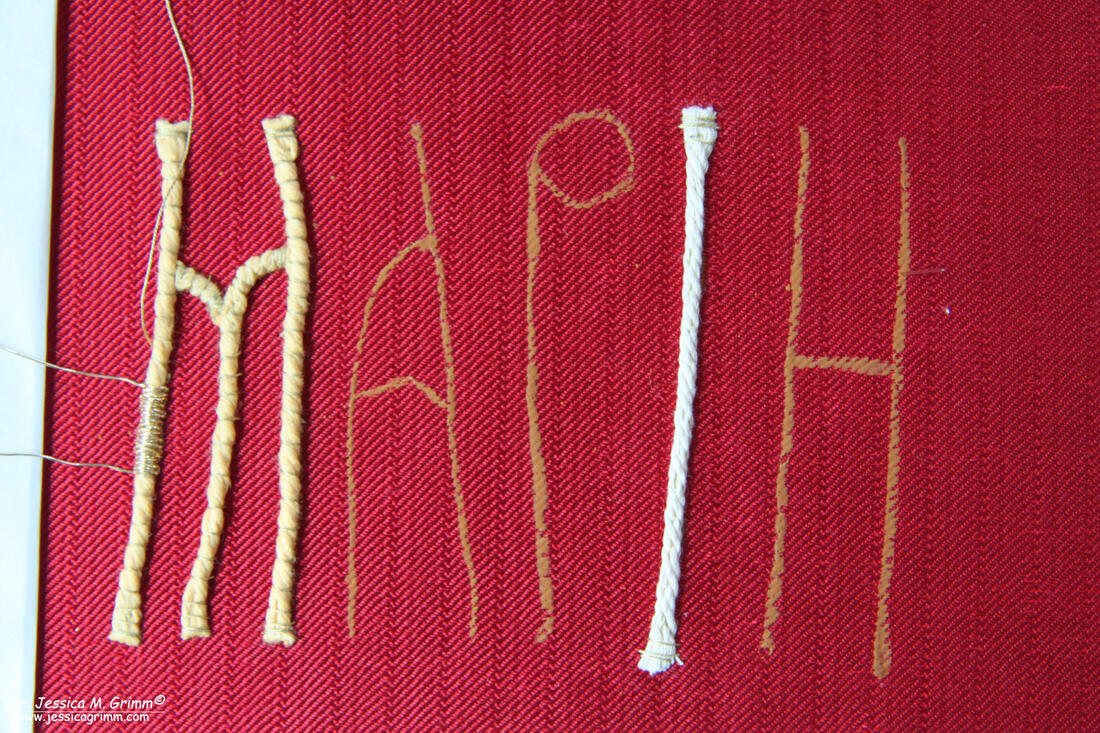
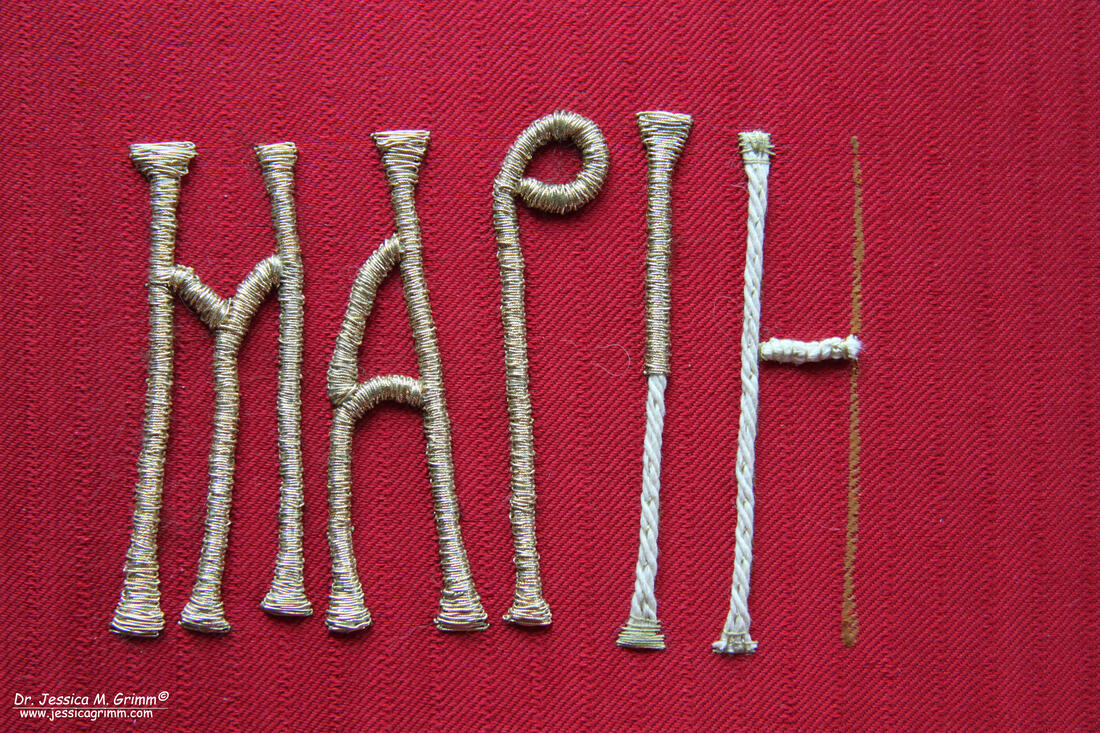
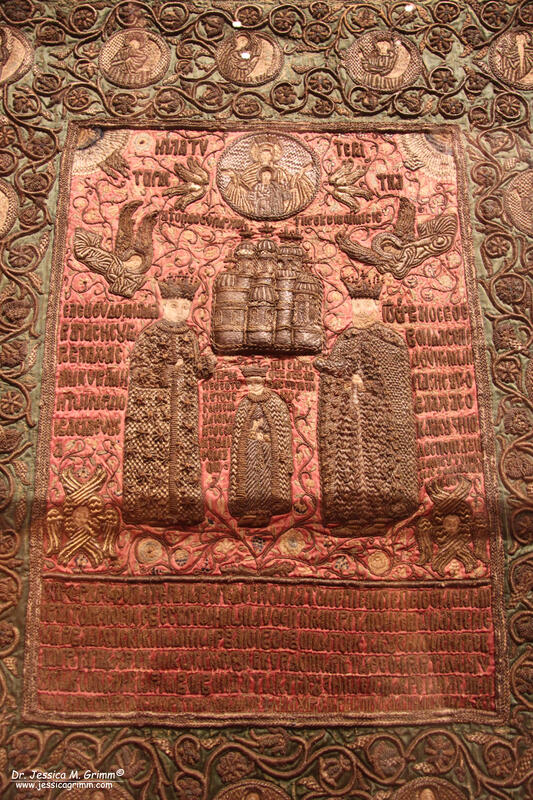
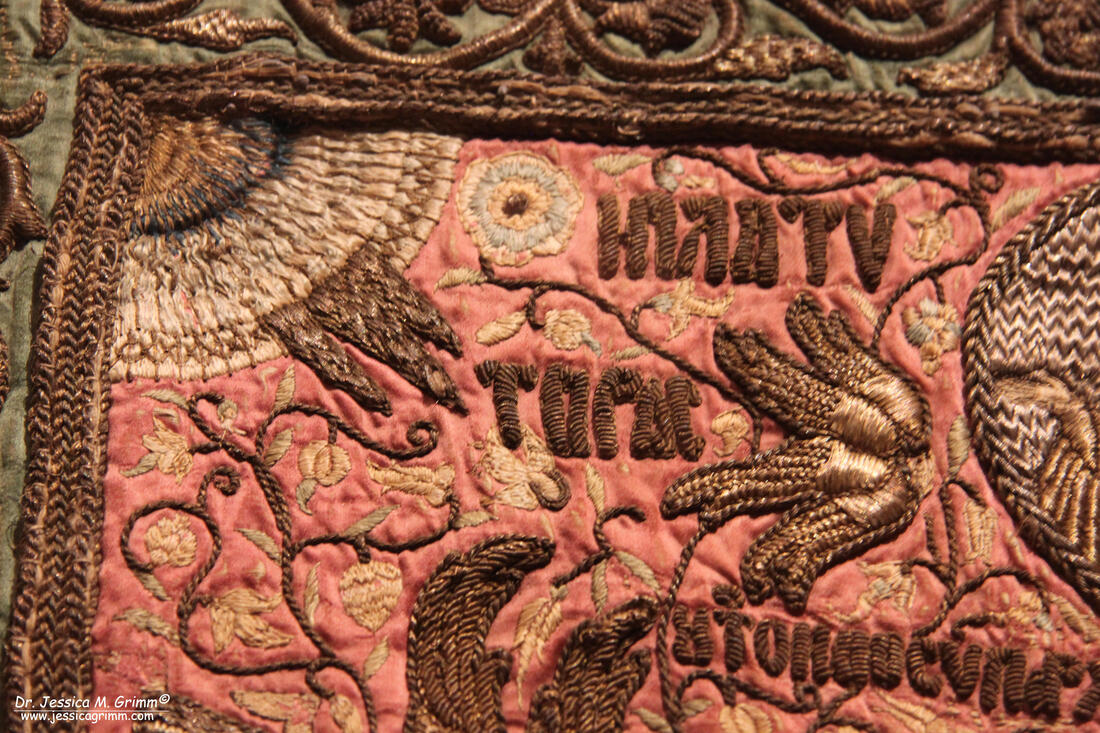
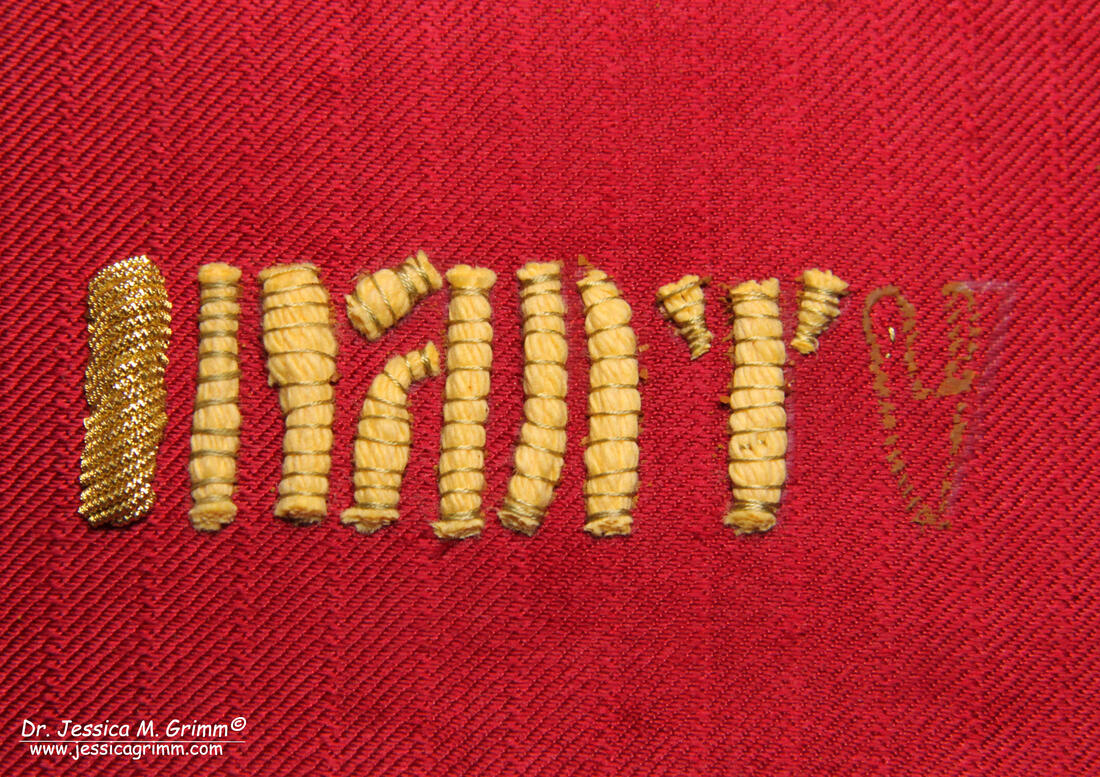
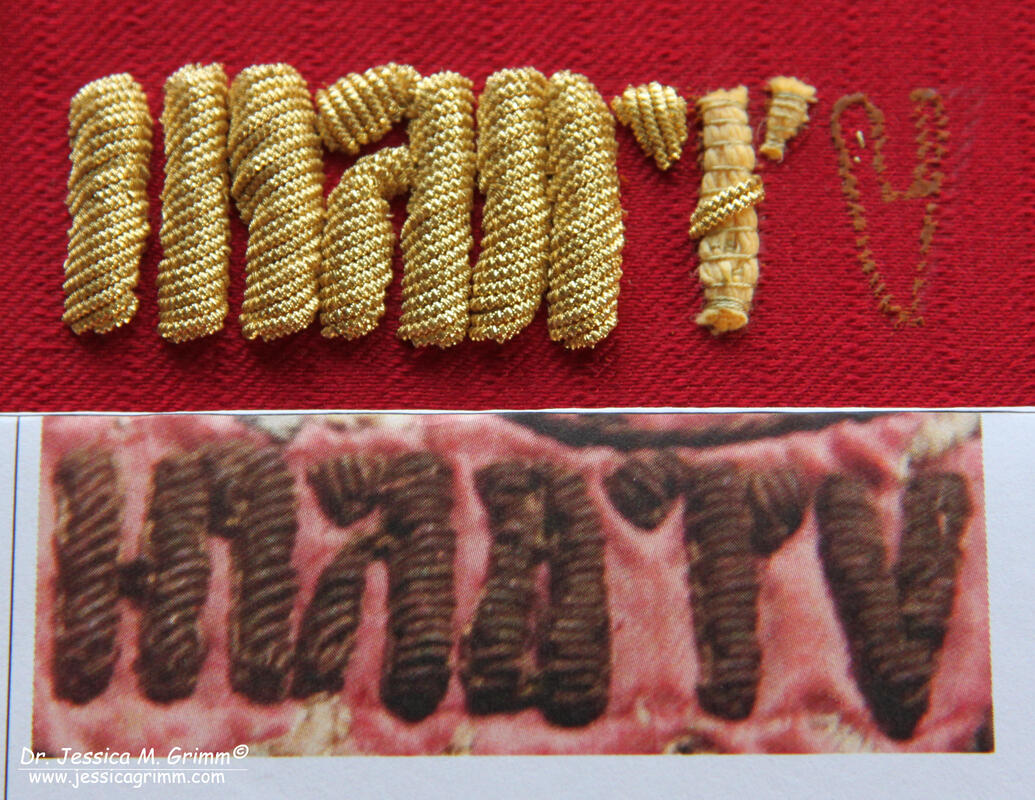
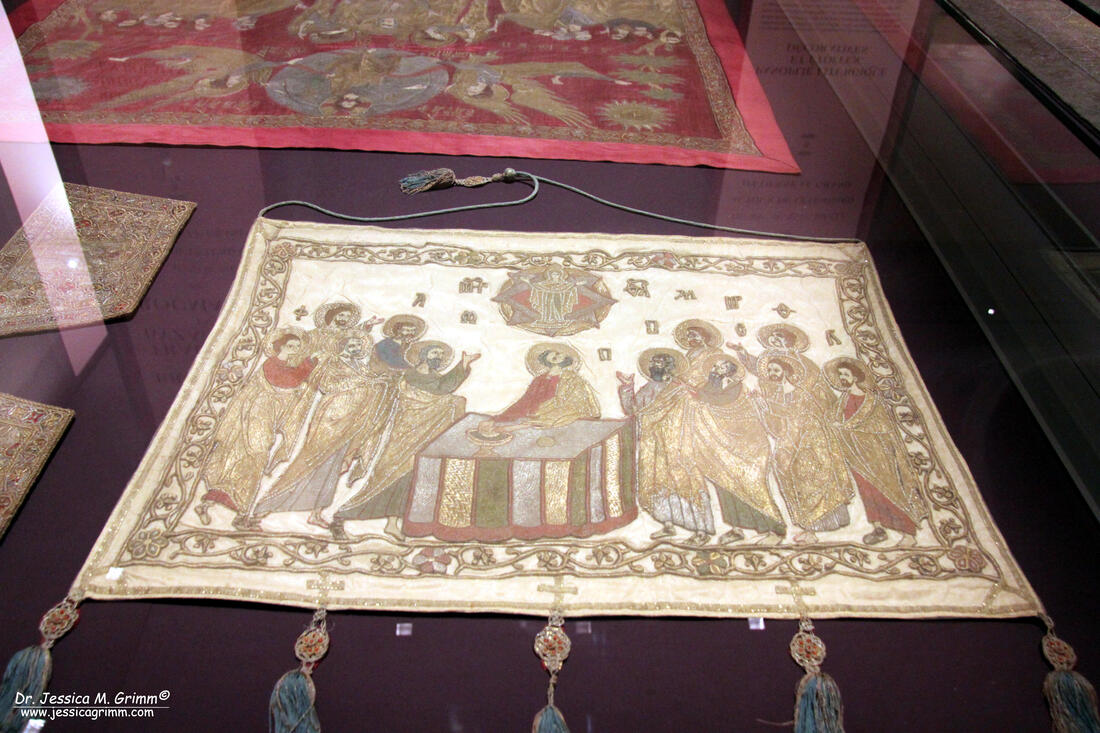
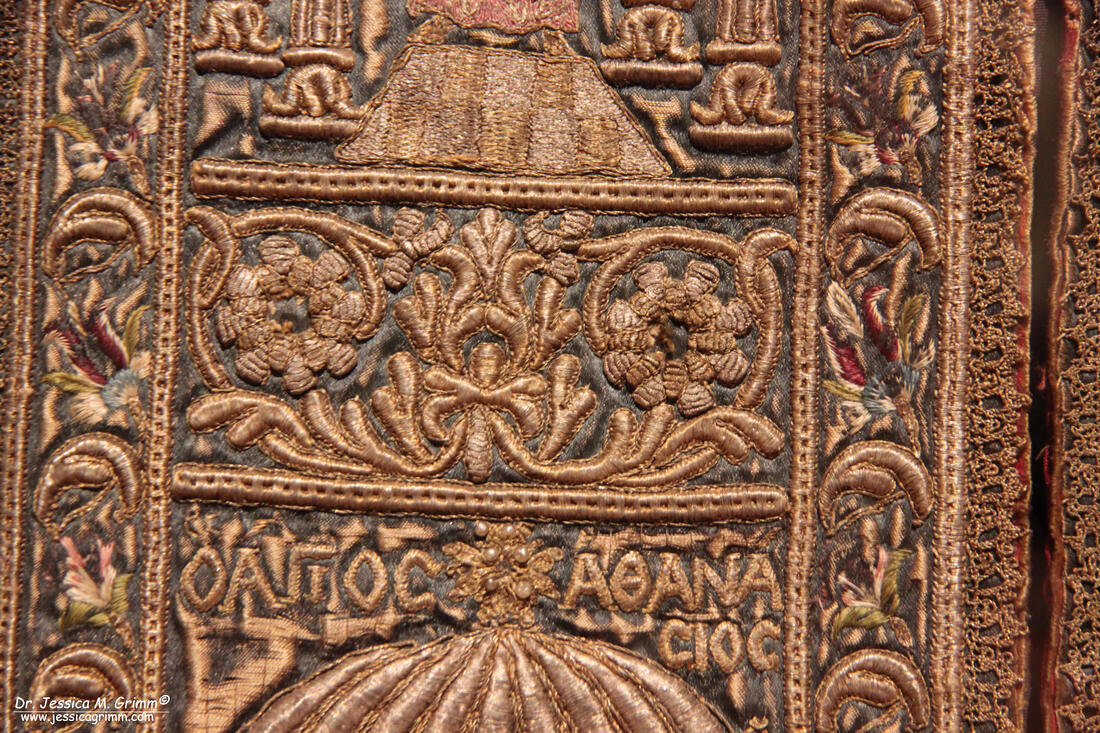
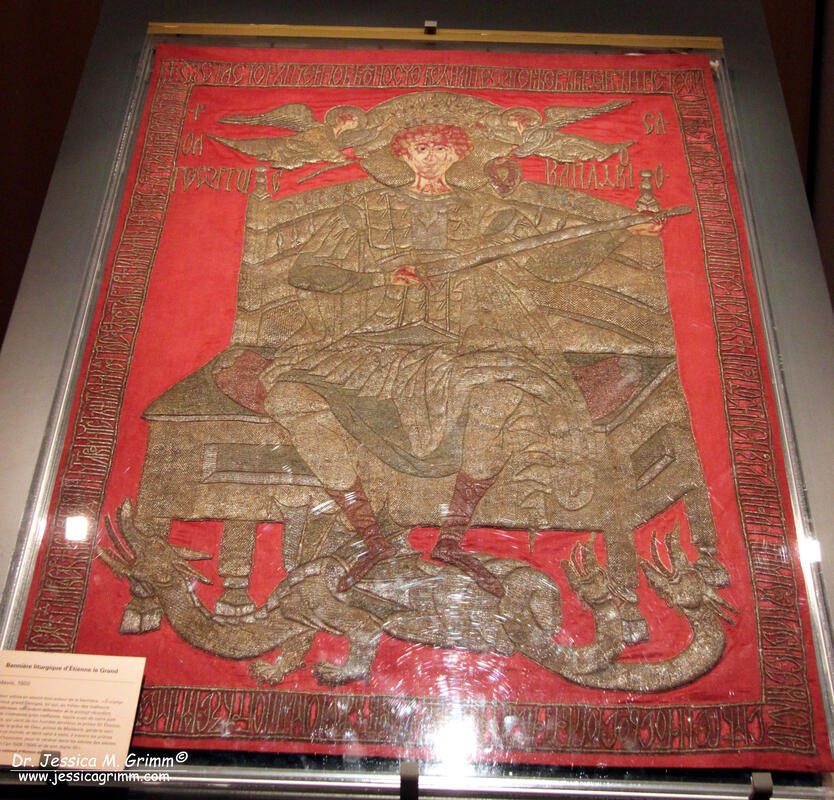
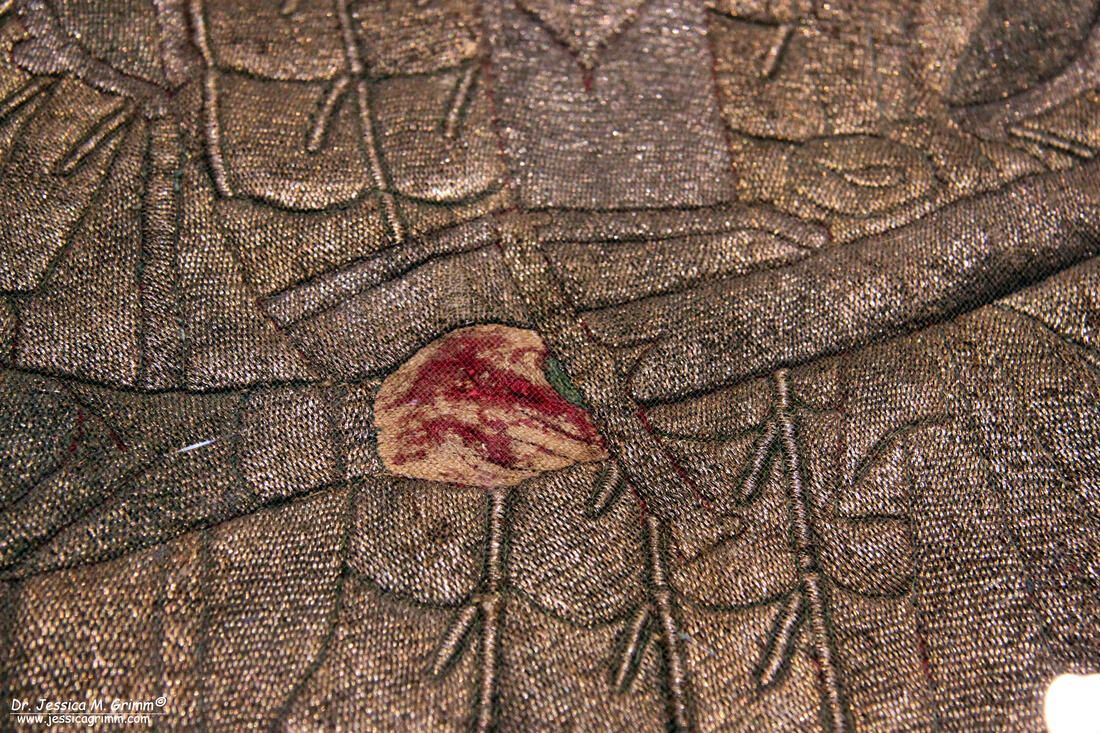
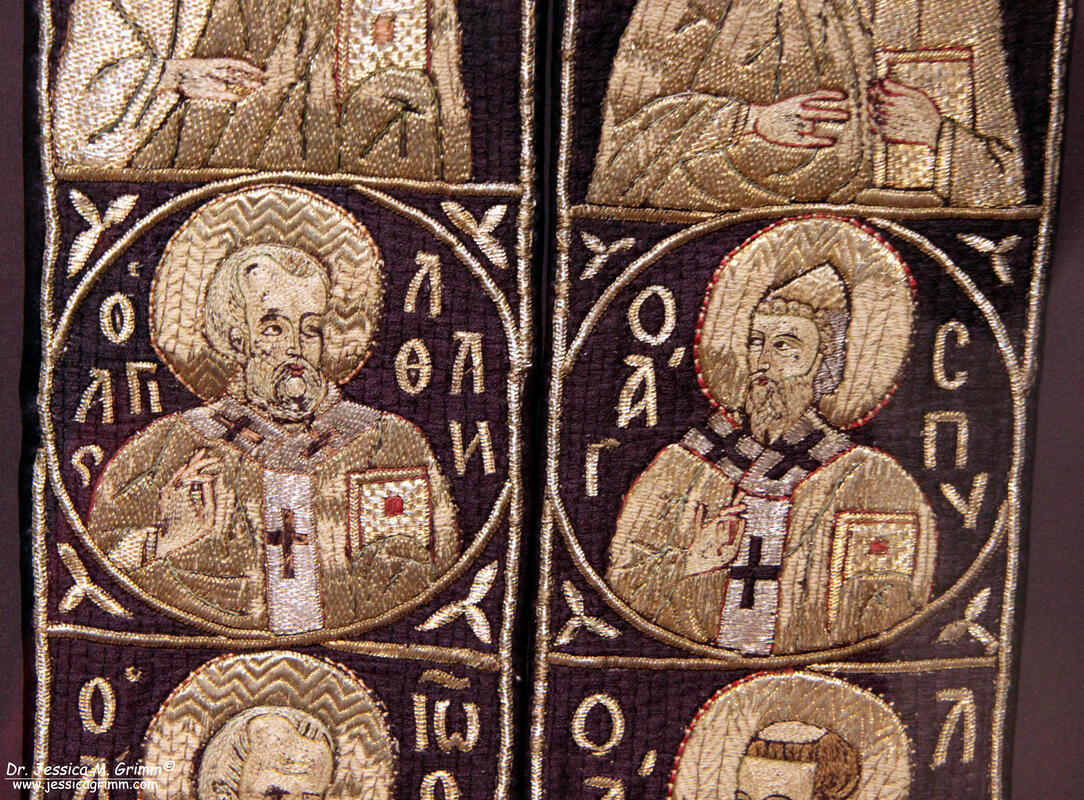





 RSS Feed
RSS Feed